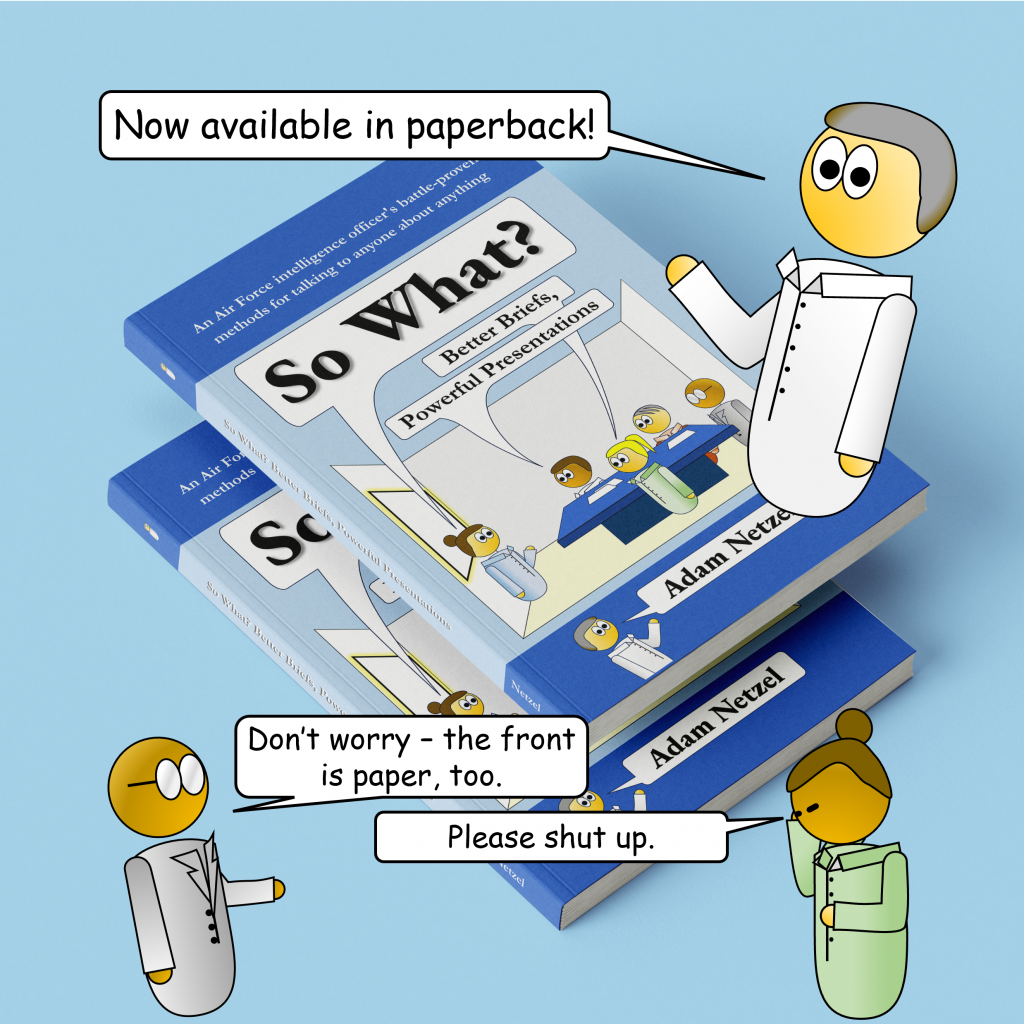Years ago, as a U.S. Air Force intelligence analyst, I was supporting flying operations at an overseas base. During one routine mission, an American pilot encountered an aircraft from a nation with whom the U.S. had a rocky relationship. We weren’t at war, but we weren’t exactly friendly, either. The foreign pilot executed a tactic during the encounter which, under certain circumstances, could make it seem like the American pilot was under attack. The standard response was to employ certain countermeasures, but if the attack wasn’t real, they could have been construed as an act of war and seriously damaged relations with the foreign nation. In this case, the American pilot did not react at all, and a few minutes later, the encounter ended with neither aircraft taking further action against the other. When the pilot landed, his commander was waiting for him, a stern look on his face.
“Why didn’t you employ countermeasures?” the commander demanded.
“Because Sergeant Netzel told me not to,” the pilot replied.
The commander looked at me and said, “Well?”
I’ve been in the intelligence career field for over a decade, and these kinds of scenarios are exactly what analysts train for. They are responsible for consuming and synthesizing massive amounts of highly technical information so they can analyze specific situations to try and determine an enemy’s likely course of action. We call it a “no-fail mission,” because giving the wrong information can have fatal consequences.
I walked the commander through all of the circumstances and variables I considered before advising the pilot on how to handle the tactic. My analysis ran counter to standard procedures, but once the commander understood the situation, he agreed and made my recommendation the standing guidance for as long as the situation with the other country remained unchanged.
This might not sound like a relatable situation, but the scenario above contains all the elements of any public speaking scenario, albeit intensely concentrated and accelerated. From knowing your audience to forming your intro, body, and conclusion, everything about public speaking is present in intelligence analysis, and the high-stakes circumstances force analysts to develop tried and true, battle-proven techniques that can be trained reliably and repeatably.
I’ve trained hundreds of public speakers, from high school dropouts to thirty-something professionals with advanced degrees. I’ve taken people with public speaking anxiety so great they threw up before their first presentation and helped them develop the confidence to brief generals. If they can do it, so can you. Public speaking is challenging, but it is learnable like any other skill. Welcome to the no-fail mission. Good luck!

